Get PeakVisor App
Sign In
Search by GPS coordinates
- Latitude
- ° ' ''
- Longitude
- ° ' ''
- Units of Length

Yes
Cancel
Share ×

Scan the QR code and open PeakVisor on your phone
❤ Wishlist ×
Choose
Delete
Shandong is a province located in eastern China with deep historical roots. It is home to one of the most sacred mountains in China and a total of 940 named peaks. The highest and most prominent mountain in the province of Shandong is Mount Tai ( 5,043 ft/1,537 m), one of the Five Great Mountains in Chinese history.
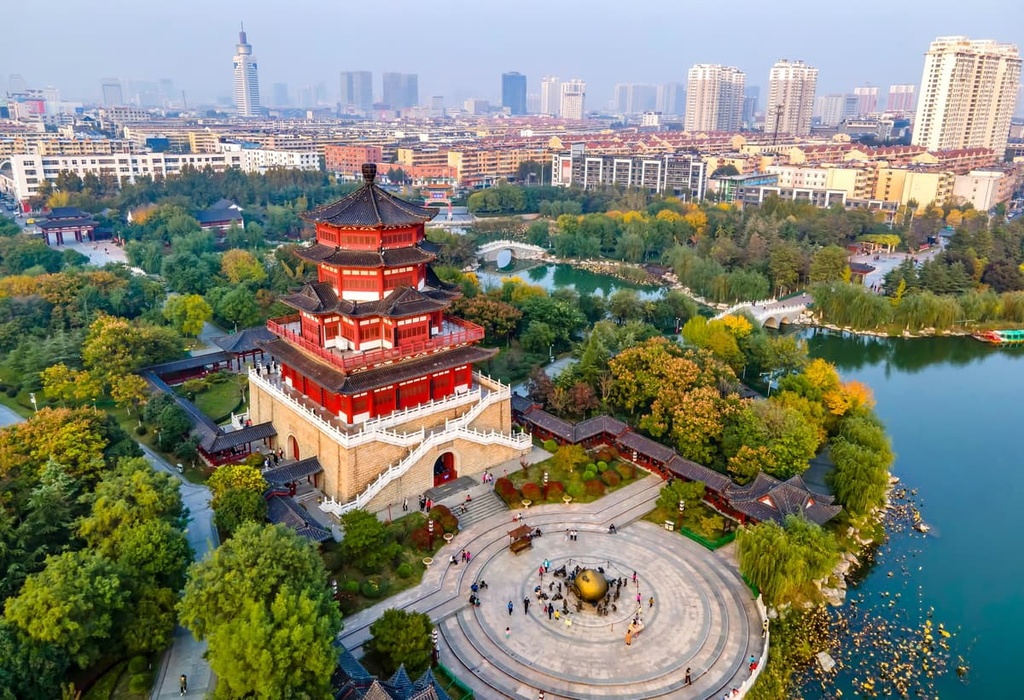
Shandong (山东, Shāndōng) is a large province located on the coast of eastern China, approximately midway between Beijing and Shanghai. It’s the second-largest province in China by population and one of the historical cradles of Chinese civilization.
The province of Shandong lies on the North China Plain to the east of the Taihang Mountains (the name Shandong literally means ‘east of the mountains’). The province borders Hebei (河北, Héběi), Henan (河南, Hénán), Jiangsu (江苏, Jiāngsū), and Anhui (安徽, Ānhuī) provinces, as well as the Bohai and Yellow Seas. The Yellow River runs through the center of the province.
While most of Shandong’s terrain is relatively flat, there are mountainous areas in the center of the province, including the region’s highest peak, Mount Tai. In fact, Mount Tai is a UNESCO World Heritage site. It is also a historic center of Confucianism, Taoism, and Buddhism. It’s one of the most famous and visited mountains in China.
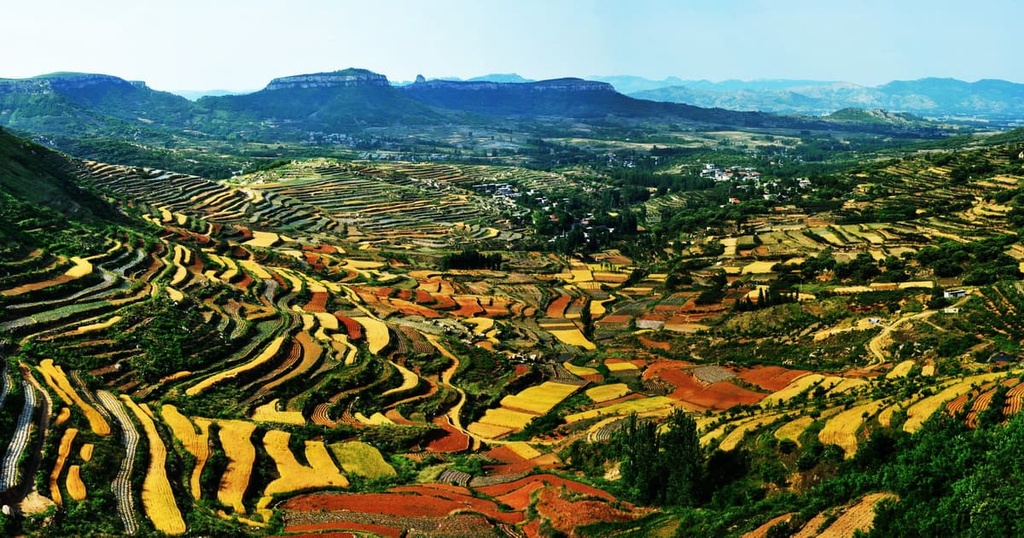
In addition to Mount Tai, there are numerous other historical sites located in Shandong, including former capitals of ancient China, early Buddhist temples, and examples of unusual European colonial architecture. Shandong was a center of early Chinese civilization and even the home province of Confucius, the most preeminent philosopher in Chinese history.
In modern times, Shandong is one of the most economically developed and vibrant provinces in China. With over 100 million inhabitants, Shandong is the second-most populous province in China, and it has the third-highest GDP of any province in the country.
The capital of Shandong is Jinan (济南, Jǐnán), which is located in the north-central part of the province. The largest city in the province is Qingdao (青岛, Qīngdǎo), which is located on the southern coast of the Shandong peninsula. Shandong’s most famous export, the world-famous Tsingtao beer, is still produced in Qingdao to this day.
Shandong is also famous for its regional cuisine (called 鲁菜, Lǔcài in Chinese), which is considered one of the eight major modern cuisines of China. Shandong food traditionally places heavy emphasis on soups and seafood.

Shandong is dominated by the Yellow River and the North China Plain, two of the most important geographical features in China.
Aside from the mountainous areas in the center of the province and the hilly Shandong Peninsula, the Shandong is mostly flat as it is dominated by the North China Plain.
The flatness of the plain creates few major obstacles to movement. This has allowed for faster communication and more economic interconnection in the region over millennia of Chinese history, especially when compared to the mountainous areas of southern and central China.
Outside of the plain, the Shandong Peninsula juts into the ocean and separates the Bohai and Yellow Seas. Shandong has a total of 3,000 km (1,900 mi) of coastline, much of which is rocky and bounded by cliffs. Most of the hills on the peninsula are under 210 m (710 ft) in elevation.
In terms of geology, Shandong is part of the North China Craton, a geologically ancient and very stable region. The inland mountains in the center of the province are formed mostly of very old rock with granitic intrusions. These rocks are overlain with crystalline shales and sedimentary rocks. Furthermore, Mount Tai is a granitic massif.
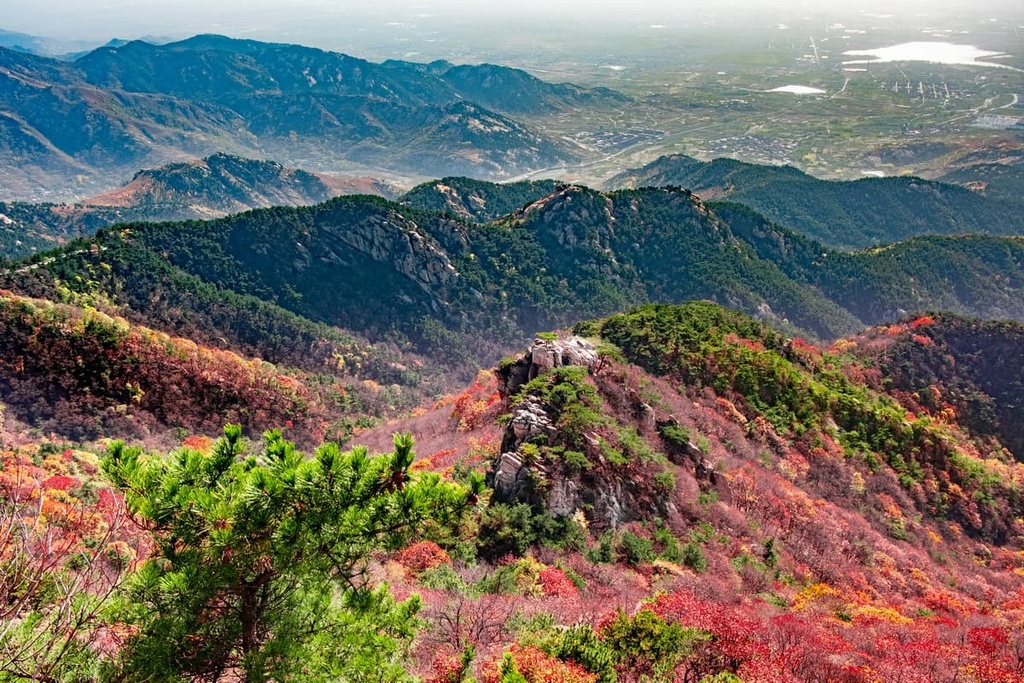
The extensive geologic history of what is now Shandong has allowed certain areas of the province to have a high concentration of fossils. The city of Zhucheng near Shandong is famous for being home to thousands of dinosaur fossils. In fact, 50 metric tons (55 US tons) of fossils have been excavated here since the 1960s, including a single site containing over 7,600 dinosaur bones.
In addition to agricultural products and dinosaur fossils, Shandong is a major center for resource extraction. Gold, diamonds, and sapphires are all mined in the province.
Shandong is also a major oil-producing region. Northeastern Shandong is home to the Shengli Oil Field, the second-largest oil field in China. As of 2018, it produced about 650,000 barrels of oil a day.
After thousands of years of intensive agriculture and human settlement, much of Shandong’s original plant and animal life is gone. The plains in the province are largely deforested, although it is common practice in China to replant rows of trees along roads or in towns and villages (often pine, poplar, or arborvitae).

Today, the North China Plain is one of the most densely populated regions in the world. It’s a major food-producing region, thanks to the rich soils created by the Yellow River’s frequent flooding.
Shandong is China’s top agricultural exporter, with wheat, cotton, and garlic as major products. It’s also an important wine-producing region and one of the few places in China with western-style vineyards.
There have been extensive reforestation efforts in Shandong over the past decades, and although they’ve shown some success, the province’s native animal life has yet to recover. Roe deer and owls can still be found in Shandong, but they’re not particularly common.
In terms of weather, Shandong has a continental climate with very cold, dry winters and hot summers. In general, the coastal areas see more precipitation, and the inland areas get progressively drier.
Some of the inland regions in Shandong can experience dust storms in the winter and spring, and the whole region has a history of flooding, particularly in the summer. Winters in Shandong can see extended periods of time where temperatures remain below freezing. Spring, summer, and fall are the best times to visit the province.
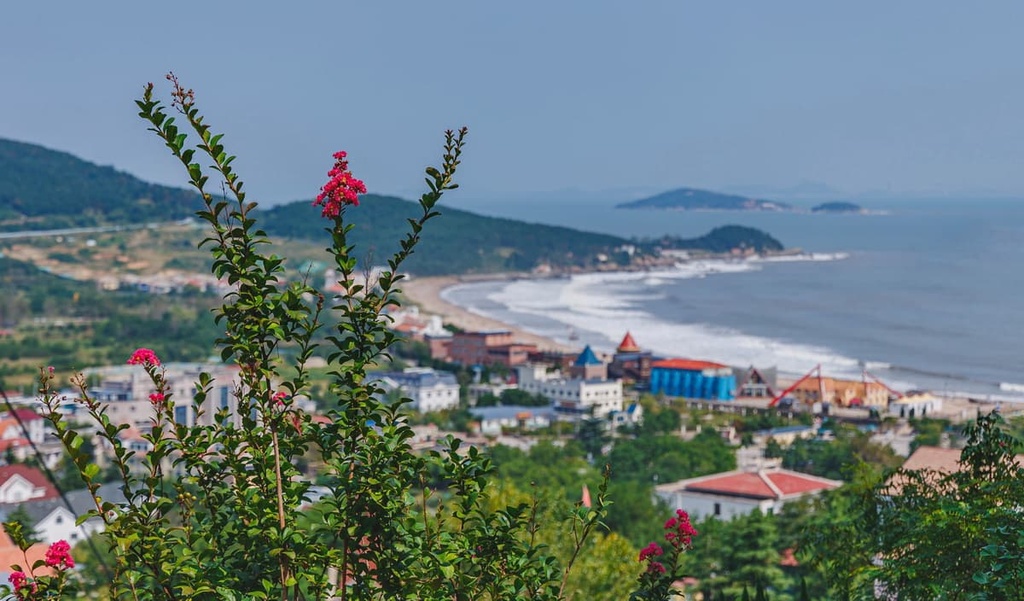
Shandong is a cradle of Chinese civilization. It is home to archeological evidence of many important prehistoric people that lived in what is now China, particularly the Dawenkou and Longshan Neolithic cultures.
The Dawenkou, who are typically dated as having lived between 4500 and 2,700 BCE, are notable for their political organization and class structure. The Longshan culture flourished in Shandong from around 3,000–1,900 BCE, immediately before the Bronze Age and the beginning of urban settlements in China.
Shandong was part of the territory of the Shang dynasty, the first historically documented dynasty of ancient China. Due to its prominent spot on the North China Plain, and its excellent ports on the Shandong Peninsula, the province has been a center for commerce for thousands of years. Much of the trade between northern and southern China since predynastic times has passed through Shandong.
In the nineteenth and twentieth centuries, China was severely weakened and Shandong experienced frequent floods and other natural disasters. During this time, Japanese, German, and British colonial interests took control of certain parts of Shandong.
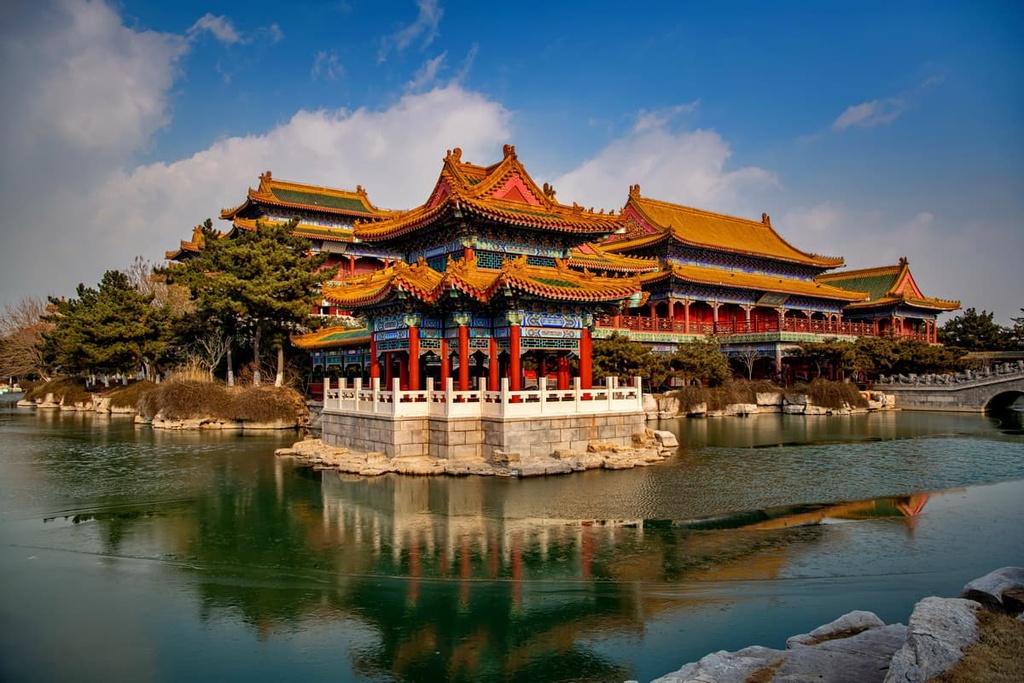
The Japanese occupied Shandong briefly during the First Sino-Japanese War, and in 1898 the Qing government was forced to sign a treaty with Germany ceding the port of Qingdao. There are still numerous German-style buildings in the city from this period. The Qing government also ceded the city of Weihai to the British.
Because of Shandong’s ports and strategic importance in China, it was the scene of major battles during the Sino-Japanese Wars and the Chinese Civil War. The battle of Taierzhuang, the first major Chinese victory over the Japanese during World War ll, took place in southern Shandong. After the end of World War ll in China, most of Shandong had been placed under the control of the Chinese Communist Party by 1945.
Shandong had a primarily agricultural economy at the time of the Communist Revolution. While it’s still a major agricultural producer, the province has become an industrial powerhouse over the past several decades. Coal and iron mining, oil production, textiles, and shipping are major industries in Shandong.

Shandong Province is a particularly excellent place to venture to if you’re looking to travel through the mountains of eastern China. Here are some of the best hikes in Shandong province to check out during your next trip to the region.
The preeminent mountain destination in Shandong is Mount Tai. Indeed, the mountain has been significant to the people living in the region for thousands of years.
Mount Tai is the most esteemed of China’s Five Great Mountains. It’s sacred to all three of China’s major faiths: Buddhism, Taoism, and Confucianism. The mountain is home to dozens of temples, gates, artistic works, and artifacts covering thousands of years of Chinese history.
Not only is Mount Tai a UNESCO World Heritage Site, but it’s also tied with the Tasmanian Wilderness in Australia as the location that meets the most World Heritage standards of any site globally. It’s considered a masterpiece of architecture, a site of extraordinary historical, religious, and cultural significance, and a place of exceptional natural beauty.
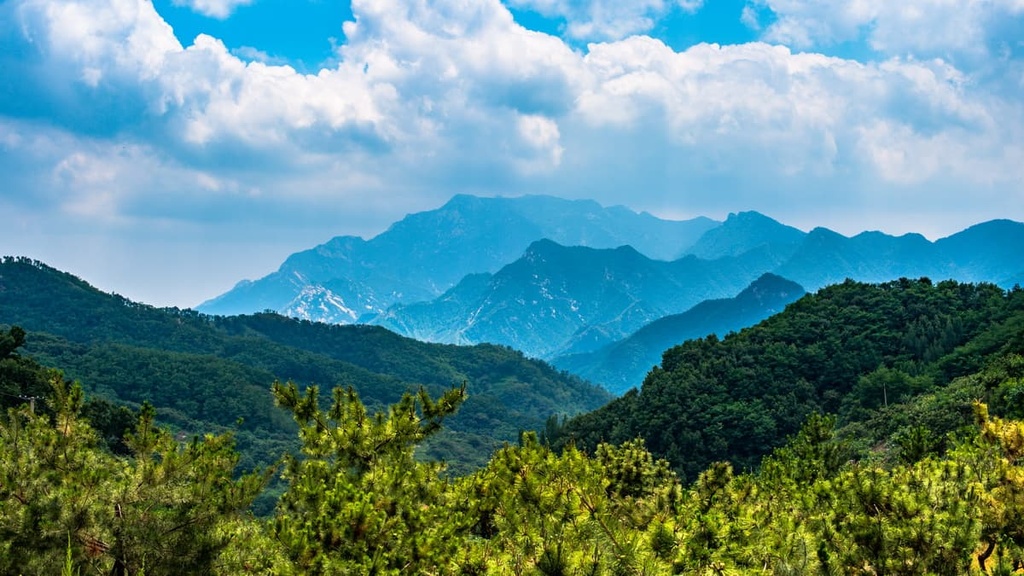
Mount Tai was already regarded as sacred in 219 BCE when the first emperor of unified China, Qin Shi Huang, visited the mountain to pay homage to heaven and Earth. This practice was eventually codified into the Fengshan Sacrifices, which continued as a matter of official state policy until the last emperor of the Qing Dynasty in the twentieth century.
For over 2,000 years, new emperors of China visited one of the Five Sacred Mountains to pay homage to heaven and earth as the first Chinese emperor had done. In addition to the hundreds of Steeles and cliff inscriptions, the mountain is also home to 22 temples and historic gates.
Climbing Mount Tai
Mount Tai’s highest point is the Jade Emperor Peak (玉皇顶, Yù huáng dǐng) at 5,043 ft/1,537 m of elevation.
There are famously 6,300 steps that you need to climb to reach the summit of Mount Tai. You can take one of several routes to the top of the mountain, including a separate hiking trail and a cable car. But the most popular route involves climbing the wide staircase to the top of the mountain.
This route takes you past the mountain’s historic gates and temples and finishes at the highest peak on the mountain, the Jade Emperor Peak. It’s a challenging, all-uphill climb that gains about 1,400 m (4,600 ft) of elevation. Budget at least four hours for the hike to the summit, and more time if you want to visit the temples and historic sites.

Mount Tai is also associated with the sunrise. It’s very popular to hike the mountain at night and watch the sun come up from the Jade Emperor Peak. If you don’t want to make the whole hike at night, there are some (very expensive) hotels near the summit that you can stay at instead.
Keep in mind that Mount Tai is a Chinese mountain park, so it won’t fit most westerners’ expectations for a mountain experience. The path is paved with stone steps, and there are restaurants and concession stands on the way up. You’ll also have to buy a 125 RMB ticket to enter the park.
If you want to shorten your hike, there is a bus that goes halfway up the mountain. From there, you can catch a cable car to the summit. Many people opt to walk the first section, take the cable car and skip the steep, near-vertical steps in the second half of the climb.
Mount Tai is extremely popular with Chinese tourists and millions visit every year. Even if you start your hike at midnight, expect to share the mountain with hundreds or thousands of other climbers. Crowds are much smaller in the winter, but you should always expect plenty of other visitors at Mount Tai.
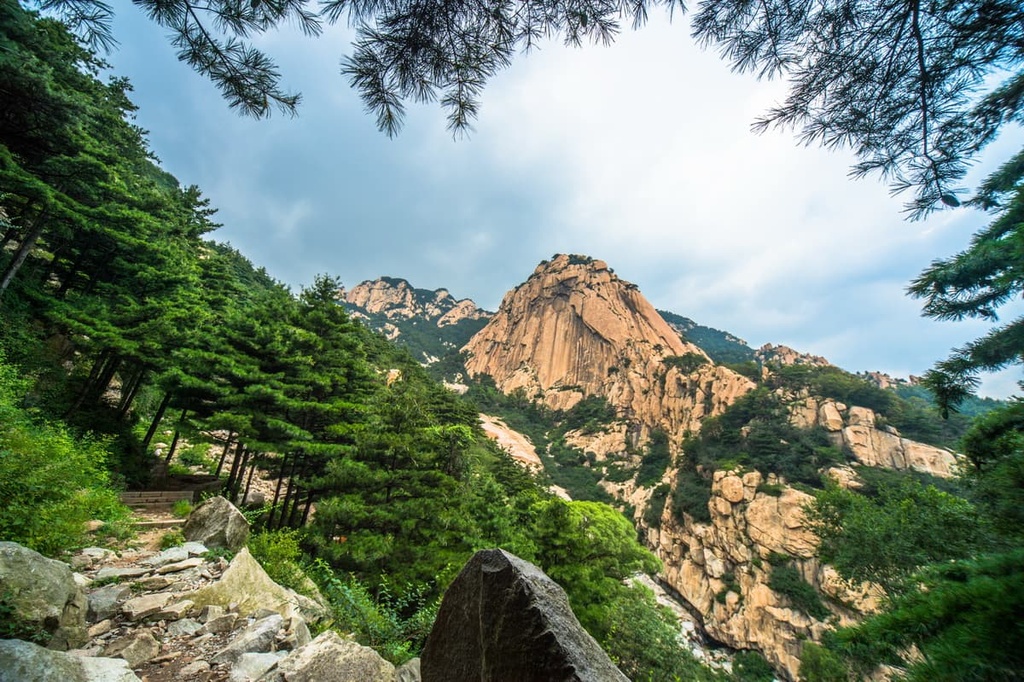
To get to Mount Tai, you’ll want to take a bus or a train to the city of Tai’An. From there, you can take a short bus or taxi ride to the entrance of the mountain park. You can also reach Mount Tai from the city of Jinan, about 70 km (43 mi) north of the mountain.
Shandong has a lot to offer to a tourist to China, from ancient historical sites to modern, vibrant cities and relaxed beach towns. Here are some of the best places to stay in Shandong during your next visit to the region.
Jinan (济南, Jǐnán) is Shandong’s capital city. Nowadays, it is home to over 9 million people, however, the area of Jinan has been inhabited for thousands of years. Jinan is currently an industrial center and home to some of the best universities in China.

Shandong is known as the “city of springs” as there are dozens of natural springs within the city in addition to beautiful spring-fed lakes. Jinan was a center for Buddhism during dynastic times, so there are a number of historic temples located in and around the city. You can also find a mountain in the city limits that’s home to hundreds of statues of the Buddha carved into the rock called the Thousand-Buddhas Mountain.
Qingdao (青岛, Qīngdǎo) is considered one of China’s most liveable cities, and it’s unique for its laid-back atmosphere and historic architecture. There are still German-style buildings in the Qingdao old town from when the Germans established a colony in the city in the early twentieth century.
As a coastal city, Qingdao enjoys beautiful ocean views and lots of excellent seafood. The Tsingtao Brewery and Beer Museums are major tourist attractions in Qingdao, and Qingdao hosts an annual ‘Oktoberfest’ every year. As it is home to a port with connections to hundreds of cities around the world, Qingdao is also a great international travel destination.
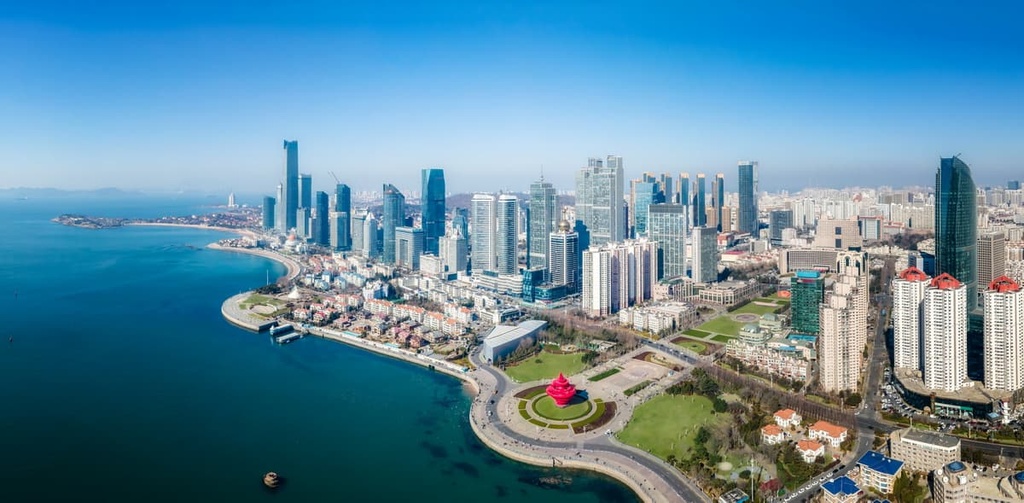
Qufu (曲阜, Qūfù) is one of the most historically important places in China. It’s the hometown of Confucius, the Chinese philosopher whose work has been foundational to Chinese society and thought for thousands of years.
This is a historic city with rebuilt Ming dynasty-era walls snaking through the center of town. Three major sites in the city associated with Confucius (the Temple of Confucius, the Cemetery of Confucius, and the Kong Family Mansion) are designated as world heritage sites.
The Temple of Confucius is the second-largest historical building complex in China, surpassed only by the Forbidden City in Beijing. The Cemetery of Confucius contains gravesites that date back more than 2,000 years to the Zhou Dynasty.
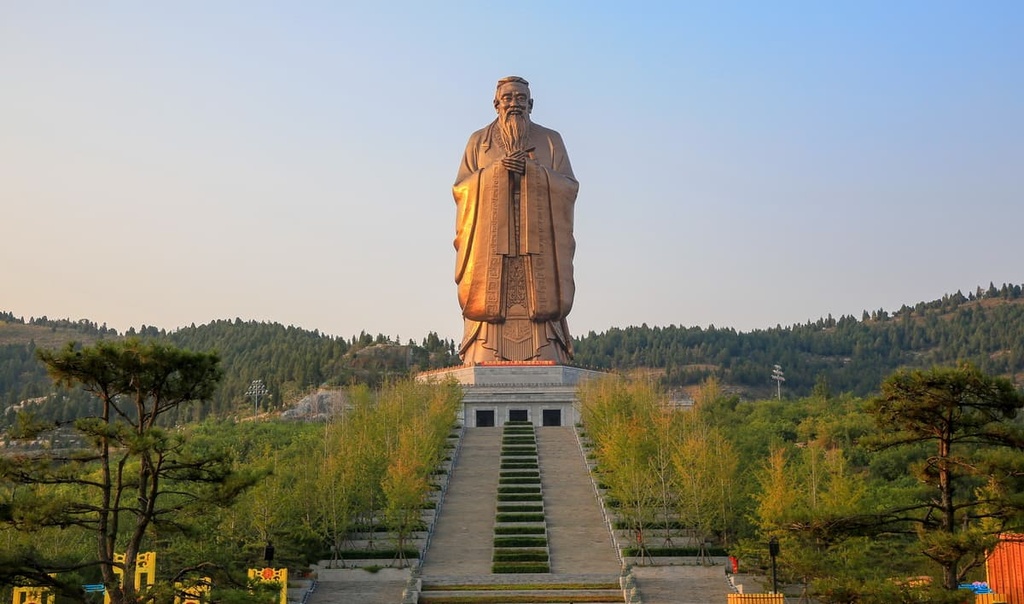
Explore Shandong with the PeakVisor 3D Map and identify its summits.








